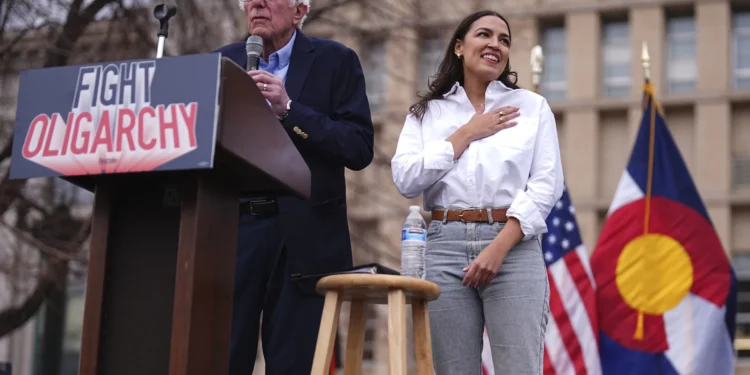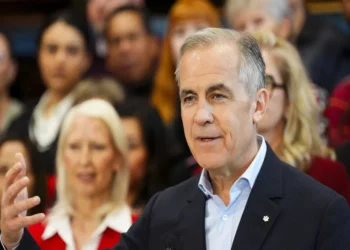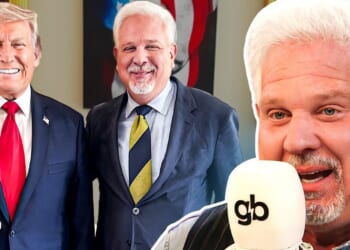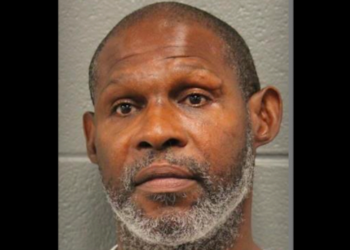Sen. Bernie Sanders (I-VT) and Rep. Alexandria Ocasio-Cortez’s (D-NY) “Fighting Oligarchy” rally tour has injected life into a listless Democratic Party. The messaging pivot from race-centric politics toward classic leftist class struggle is savvy: Economics unites where race divides, and class warfare polls better than DEI.
Yet, while the tour draws big crowds of the Democratic faithful — so far, over 250,000 have turned out in red and blue states — the party still lacks an affirmative governing vision needed to win a majority of voters back into the fold. The public knows what the party is against — President Donald Trump, Elon Musk, racists, and oligarchs — but what it stands for remains anyone’s guess. This is a consequence of sidestepping meaningful self-reflection following the humiliation of 2024.
There were encouraging signs for the party early on: Liberal podcasts sprouted like weeds, and some even acknowledged the need to appeal to men. But this burst of introspection was quickly swallowed up by hysteria over Musk’s role at the Department of Government Efficiency and Trump’s Cabinet nominees. Consensus never emerged, and Democrats defaulted to their “resistance” posture, animated by the fight against Trump and not for anything in particular.
One of the Democrats’ most visible leaders, Gov. Gavin Newsom (D-CA), seems to recognize the problem.
“We have not done a forensic of what just went wrong, period, full stop,” Newsom told the Hill last Tuesday. “I don’t know what the party is. I’m still struggling with that.”
The Trump-led GOP, on the contrary, suffers no such identity crisis. Whatever one thinks of the “America First” agenda, it reflects a positive governing vision for the future of the United States, which Trump has endeavored to enact at breakneck speed. And while certain aspects are oppositional in nature — its anti-woke stance, for instance, is framed in terms of being “against” something more than being “for” an alternative — most of the America First program articulates a pro-active vision.
On immigration, for example, the Trump agenda is at its clearest. Border security and restricted migrant flow have been the staple of his political identity since coming down the escalator a decade ago. Trump has relentlessly articulated this positive vision. The public knows exactly what he means to do — and polls show they are quite pleased with what he’s done so far in his second term.
The Democratic vision on immigration, on the other hand, is entirely centered on stopping Trump. The public is well aware that Democrats believe mass deportations are wrong and that Trump’s agenda is inherently evil. But no one understands what the Democratic Party stands for on the border and immigration. Does it want to decriminalize border crossings, as its ascendant progressive wing desires? Does it still want to abolish Immigration and Customs Enforcement? Is it still on the case of identifying and addressing immigration’s “root causes”?
Democrats need to answer these questions in public if they are going to be seen as a real alternative to Trump’s Republican Party. And they need to move beyond mere platitudes. The immigration crisis engulfing America is the product of decades of cheap talk and willful neglect. Solving it requires real plans that acknowledge the economic and security realities that come with having upward of 20 million undocumented people living in the country. Saying “no human is illegal” and “we are a nation of immigrants” may have worked once, but the nation is no longer moved by abstractions — it now demands data and mechanisms.
America gets that Democrats don’t like Trump’s plan. Now, the country wants to know what the Democrats’ plan is so it can have something to weigh it against. Until they do, Trump will continue to delight in filling in the blanks by accusing Democrats of preferring open borders and no consequences for entering the country by illegal means.
The same dynamic holds true in foreign policy. Love it or hate it, Americans largely understand the broad strokes of Trump’s foreign agenda: reduce troop presence and foreign aid around the world, pressure allies to boost their own defense spending, cut peace deals where conflict rages, and strengthen the military.
Conversely, Democrats appear to have no affirmative agenda for pursuing America’s global interests. That’s because they have not come to an internal consensus on the most pressing foreign policy items. The party’s ascendant progressive faction stridently opposes Israel, while the establishment wing, embodied by the previous administration, continues to favor arms deals to Israel. Democrats also appear to oppose President Vladimir Putin’s Russia, convinced by their preferred news outlets that Trump and Putin are in league. But they offer no clear alternative to Trump’s path. Is anyone aware of the Democratic plan to handle the war in Ukraine? Is it to fund the war indefinitely? To send in U.S. troops? To hold hands and sing “Imagine” until the guns turn into ploughshares? Your guess is as good as mine.
Democrats fare best on economic messaging, though this may have more to do with Trump’s early stumbles than with Democratic coherence. To be sure, Trump’s tariff plan is not popular: Only 33% of Americans approved of it, according to a recent Fox News poll, and a CBS News poll from Sunday shows that people believe not nearly enough is being done to lower prices.
But voters get the gist of what Trump stands for: reworking trade deals to revitalize manufacturing, cutting taxes, and deregulation.
But Democrats are even more scattershot here. While Ocasio-Cortez and Sanders have championed progressive economic populism, many others, reflexively opposing Trump, have suddenly morphed into Milton Friedman-esque free traders. Sen. Brian Schatz (D-HI), who praised former President Joe Biden’s use of tariffs in 2022, pivoted sharply in 2025, posting on X following Trump’s tariff announcements: “It should not be a goal of our national economic policymakers that we make our own socks.” He quickly deleted the post once his record was raised.
DEMOCRATS SWITCH FROM RACISM TO OLIGARCHY
Regardless of which economic vision wins out, both are framed in terms of being against things, whether the “oligarchy” or Trump’s tariffs. The Democratic reflex in the Trump era is to “resist,” not to propose or inspire. Do they want redistributive “economic justice,” or do they want the economy to grow? Do they want free trade or fair trade? Do they want to punish corporations, or do they want to collaborate with them to promote other Democratic causes, such as climate change and LGBT rights? America doesn’t know the answers to these questions because the Democrats don’t yet know themselves what they stand for.
The Democrats’ lack of an affirmative policy vision and their stubborn commitment to being “anti-Trump” do more to empower the president than they realize. It enables him to define the Democrats even as his own approval rating sinks. And it keeps Trump at the center of our politics. A decade into the Trump era, and they still haven’t realized that his power comes from the attention he demands. Until Democrats craft a vision that inspires rather than opposes, they’ll remain spectators in Trump’s America, secondary characters barking from the sidelines.















